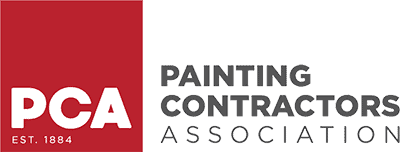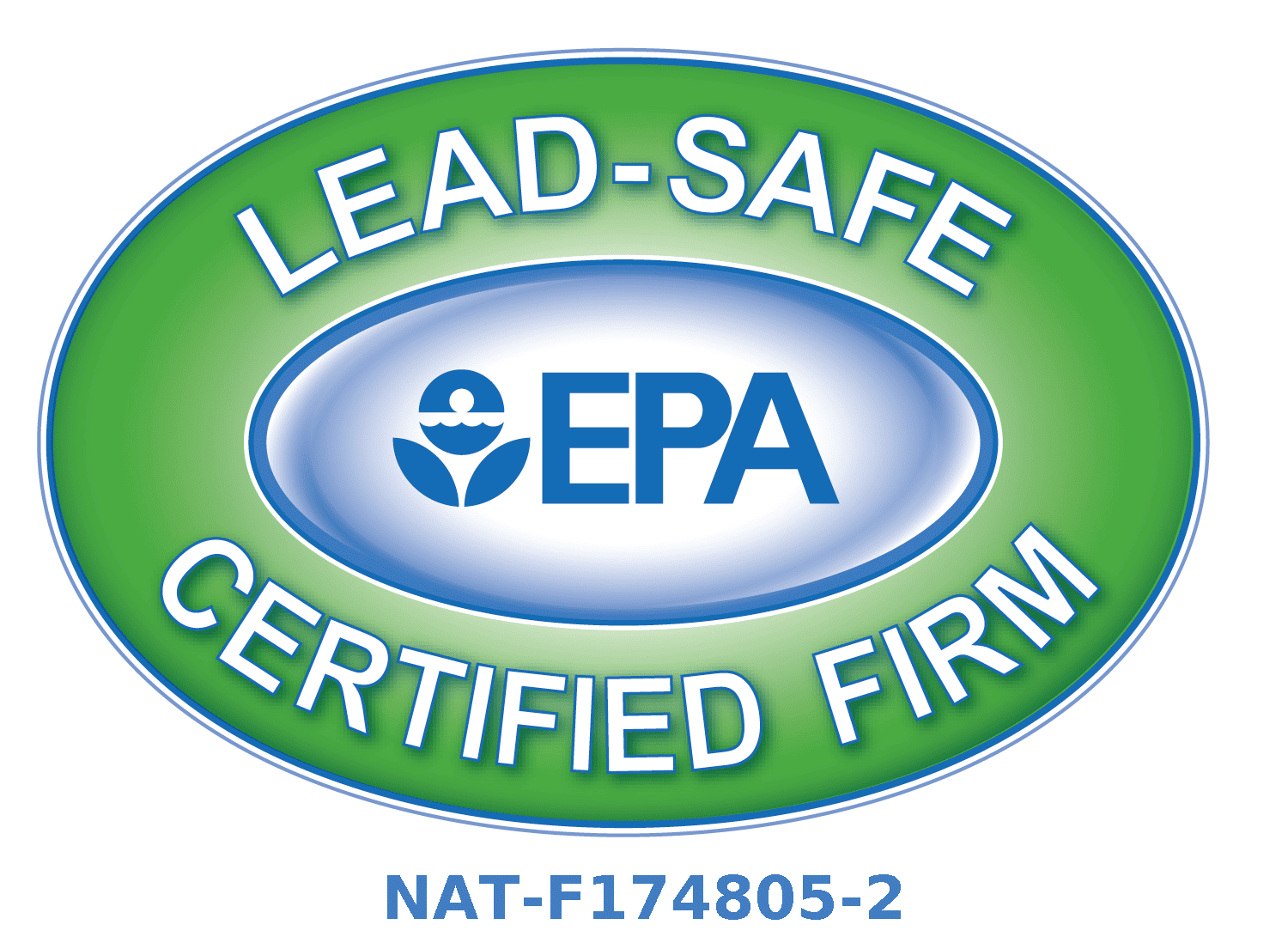Most interior paint jobs don’t fail all at once—they start breaking down in specific areas. If you’ve owned or managed a home, condo, or apartment, you’ve likely seen trim chipping, bathroom ceilings peeling, or baseboards discolored long before the walls show problems.
These weak points tend to show signs of failure first:
- High-touch surfaces like doors and trim wear down from friction and handling.
- Bathroom ceilings and walls blister or peel from humidity and poor prep.
- Window sills and baseboards suffer from sun exposure, impact, and dirt buildup.
- Poorly prepped areas flake, peel, or stain due to bad adhesion or skipped primers.
What starts as a cosmetic issue often turns into recurring maintenance. And repainting—even partial—can quickly eat into time and budgets.
The good news: most of these problems are preventable with the right interior paint products, prep, and environmental controls. Let’s explore exactly what fails first, why it happens, and how professionals ensure your paint lasts longer.
Most Vulnerable Areas in a Home Interior Paint Job

Certain surfaces are naturally more prone to failure. Whether it’s from heat, moisture, or frequent contact, these areas require a more deliberate approach.
Doors, Door Frames, and Trim
These see constant contact—grabbing, slamming, cleaning, even scratching from pets or bags. Paint here fails faster because of:
- Friction: Causes gradual erosion of the coating
- Low-durability paint: Latex wall paint used on trim peels quickly
Solution: Use oil-based or hybrid enamel paints. These form a hard film that resists scuffing and wipes clean. Always sand and prime the surface first, especially if switching from oil to water-based paint.
Window Sills and Baseboards
These surfaces deal with sun exposure, condensation, and physical contact from vacuuming and mopping. You’ll often see:
- Peeling from moisture buildup
- Fading due to UV rays
- Impact wear from furniture or cleaning tools
Solution: Use moisture- and UV-resistant trim paints. Semi-gloss or gloss sheens hold up best here. In older homes, address condensation issues to prevent repeated failures.
Bathroom Walls and Ceilings
Humidity is the enemy. Bathrooms that lack proper airflow or ventilation suffer from:
- Blistering or bubbling paint
- Mildew spots on ceilings or corners
- Peeling near showers or tubs
Flat ceiling paint absorbs moisture unless it’s formulated for humid environments.
Solution: Use mildew-resistant primers and apply mold-resistant ceiling paint (e.g., Zinsser Perma-White or Benjamin Moore Aura Bath & Spa). Install or maintain exhaust fans to keep moisture under control.
Kitchens and Backsplashes
Cooking introduces grease, smoke, and high temperatures—especially near stoves and sinks. Common failures include:
- Grease-stained walls
- Flaking from water splashes
- Dulling and yellowing
Solution: Use scrubbable satin or semi-gloss paints formulated for kitchen environments. Degrease thoroughly before painting, and use a bonding primer to ensure adhesion in splatter zones.
Common Causes of Early Paint Failure—By Type
Paint can fail in many ways. Each type of failure points to a different root cause, usually tied to prep or product quality.
Peeling and Flaking
Occurs when paint can’t bond properly to the surface. Causes include:
- Dirty or greasy walls
- Glossy surfaces without sanding
- Skipped primer on bare drywall, wood, or patched areas
Prevention:
- Clean thoroughly with degreaser or TSP substitute
- Sand glossy or old oil-based finishes
- Apply a high-quality primer (e.g., Kilz 3 Premium, Stix Bonding Primer)
Cracking or Alligatoring
This is when paint forms a rough, cracked pattern, often due to:
- Over-application (too thick, too many coats)
- Incompatible layers (latex over oil without prep)
- Applying over unstable or flexible substrates
Prevention:
- Don’t rush layers; allow proper dry time
- Test for existing paint type (latex vs. oil)
- Sand and prime when switching product bases
Fading or Discoloration
Typically seen near windows or skylights, fading is accelerated by UV rays. Low-grade paints use inexpensive pigments that degrade quickly.
Prevention:
- Use fade-resistant interior paints in sunlit areas
- Choose products with UV stabilizers
- Consider window films or UV-blocking curtains
Mold and Mildew
Mostly seen in bathrooms, basements, and behind furniture. Caused by:
- Trapped moisture
- Poor ventilation
- Using standard interior paints in damp areas
Prevention:
- Use mold-inhibiting primers
- Select mildew-resistant topcoats
- Promote airflow with exhaust fans or dehumidifiers
Staining or Bleed-Through
Common in older homes or after water damage. You’ll see:
- Yellow or brown stains reappearing through new paint
- Crayon or ink bleeding through
- Tannins from wood trim causing dark splotches
Prevention:
- Use stain-blocking primers (oil- or shellac-based for tough stains)
- Spot prime any area with discoloration before top coating
Paint Product Selection: The Hidden Cause Behind Early Failures

Not all interior paints are built to last. Lower-cost paints may seem economical, but they contain more filler and less binder—the element that gives paint its durability.
Finish Type Matters
| Surface | Recommended Finish | Why |
|---|---|---|
| Ceilings | Flat or matte (moisture-rated) | Hides flaws, reduces glare |
| Trim and Doors | Semi-gloss or gloss | Scrubbable, resists dents and fingerprints |
| Kitchen/Bath Walls | Satin or semi-gloss | Withstands moisture, grease, and frequent wiping |
| Bedrooms/Living | Eggshell or matte | Balanced aesthetics and cleanability |
Premium Interior Paint Recommendations
| Brand | Product | Key Benefit |
|---|---|---|
| Benjamin Moore | Aura or Regal Select | Superior adhesion, fade-resistant, scrubbable |
| Sherwin-Williams | Emerald Interior | Stain-blocking, smooth finish, low-VOC |
| Behr | Marquee | One-coat coverage, mildew-resistant |
| Zinsser | Perma-White Interior | Mold- and mildew-proof; ideal for bathrooms |
Investing in high-quality paint reduces the risk of touch-ups and full repaints. Specialty paints are particularly valuable in moisture-prone or high-use spaces.
Service-Specific Prevention: What Professional Painters Do Differently
Professional painters use tested systems—not shortcuts. That’s why pro-applied interior paint jobs last longer and fail less often.
Surface Prep
Prep accounts for 60–70% of a quality paint job. Professionals:
- Wash walls with degreasers
- Patch, sand, and caulk gaps
- Use bonding primers for tough surfaces
- Conduct moisture readings on plaster and new drywall
Skipping any of these steps shortens paint life.
Layer Compatibility Checks
Latex over oil causes peeling unless properly treated. Pros:
- Perform adhesion tests on old interior paint
- Use bonding primers like Stix or INSL-X Aqua Lock
- Scuff-sand old oil-based trim before painting
Environmental Controls
Paint failure isn’t just about walls—it’s also about the room climate.
- Pros monitor temperature and humidity
- They ventilate high-moisture rooms with fans or open windows
- They ensure proper curing times to prevent early cracking or failure
Touchpoint Reinforcement
High-traffic areas like corners, handles, and banisters get extra attention.
- Pro painters often apply extra coats here
- Use enamel or polyurethane-reinforced coatings for durability
Maintenance Tips to Prevent Premature Interior Paint Failure

Interior paint longevity isn’t just about application—it’s about upkeep.
Regular Cleaning
Dirt buildup accelerates failure. Clean walls using:
- Mild detergent and soft sponge
- Avoid abrasives, especially on matte or eggshell
Trim should be wiped monthly. Wall surfaces can go 6–12 months between light cleaning, depending on traffic.
Environmental Control
Combat condensation and mold with:
- Exhaust fans in all bathrooms
- Dehumidifiers in basements or humid climates
- Opening windows for airflow in tightly sealed homes
Early Repair
Address chips and gouges immediately.
- Use spackle for dents, prime, then spot-paint
- Store leftover paint in airtight containers, labeled by room and finish
FAQs: People Also Ask
Why is my bathroom ceiling paint peeling?
Usually due to humidity and lack of moisture-resistant paint or proper priming.
How long should interior paint last?
5–10 years depending on prep, paint quality, and room conditions.
Can I paint over old paint that is flaking?
No. You must remove loose paint, sand, prime, and then repaint.
What type of paint is best for kids’ rooms?
Satin or eggshell with scrubbable, low-VOC formulas for safety and cleanability.
How can I tell if my paint is oil- or water-based?
Rub it with rubbing alcohol. Latex paint will come off; oil-based won’t.
Be Proactive—And Strategic—With Paint Failures
Interior paint failure usually starts small—trim chipping, mildew spots, or peeling corners. But these small failures, if ignored or repeated, lead to major maintenance costs and aesthetic decline.
Professional-grade prep, finish selection, and quality paints can delay the repaint cycle by years. For homeowners and managers alike, that means better ROI, fewer complaints, and less maintenance disruption.
If you’re starting to see signs of interior paint failure, act now. Address the root cause, choose the right product, and when in doubt—consult a painting professional to protect your home investment.



